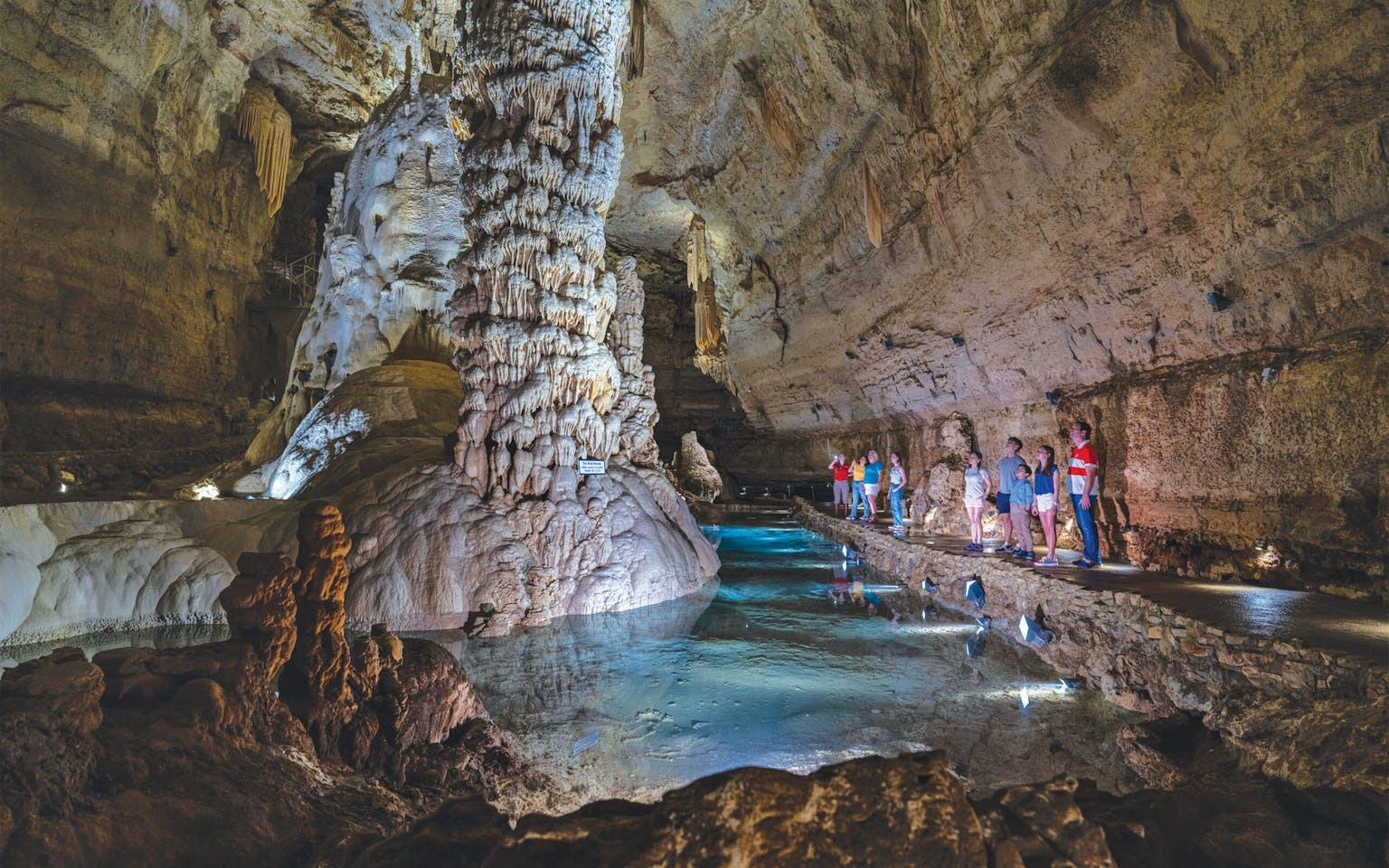By Courtney Bond with Texas Monthly
My extended family settled at Canyon Lake before it had a lake, so when I tell you that the New Braunfels I knew as a kid bears little relation to the modern city it is today, you can take me at my word. Growing up in Austin in the seventies, I loved our weekend getaways to see my aunts, uncles, and grandparents in Canyon Lake. They’d take my brother and me to “town”—New Braunfels is about twenty miles down the road—for errands (bleh), followed by shakes from Dairy Queen or burgers at Pat’s Place (yay!).
Pat’s is still there, but now New Braunfels is more than 116,000 residents strong (up from only around 17,800 fifty-five years ago) and one of the fastest-growing cities in Texas, convenient to both Austin and San Antonio. Much like the German immigrants, led by Prince Carl of Solms-Braunfels, who showed up at this Hill Country oasis in 1845, today’s transplants come here for the economic opportunities and exquisite natural beauty, the latter anchored by Comal Springs, the largest network of freshwater springs in Texas.
Over the decades, Carl’s idyllic outpost evolved into a weekend wonderland, a summery destination centered around the Schlitterbahn water park and the tube-friendly Comal and Guadalupe rivers. But New Braunfels, which includes the popular Gruene historic district, is its most essential self when there’s an autumnal nip in the air. Wurstfest—the ten-day festival of sausage, beer, and music—kicks off the holiday season in early November, followed by the Christmas shopping extravaganza Weihnachtsmarkt and then Wassailfest. This winter will also bring a much-anticipated restaurant housed in the renovated 1929 city hall building. And the landmark Faust Hotel, which has been undergoing a $4.5 million restoration, is set to reopen next spring.
Friday
New Braunfels has plenty of water-oriented hotels, including the former Gruene Outpost River Lodge, which was renovated and opened this past summer as the stylish and family-friendly Hacienda del Rio by its new owners, French natives Franklin Dusserre and Dylan Petrich, hoteliers known as the French Cowboys.
But fall calls for something cozy. You might drive right by Sophie’s Gasthaus, set back from the street and peeking out from behind manicured trees, if not for the art installation out front: a life-size bronze rhinoceros with a smartly dressed man and woman on its back, he with the head of a dog and she a rabbit. The whimsical piece by Gillie and Marc Schattner, Rhino Wild Ride, embodies the modern aesthetic of this handsome estate turned boutique hotel, built in 1906 and impeccably restored in 2021. Most of the eight suites are named for New Braunfels notables, and community spaces include a formal dining room, an enclosed bistro-style patio, and a sitting room.
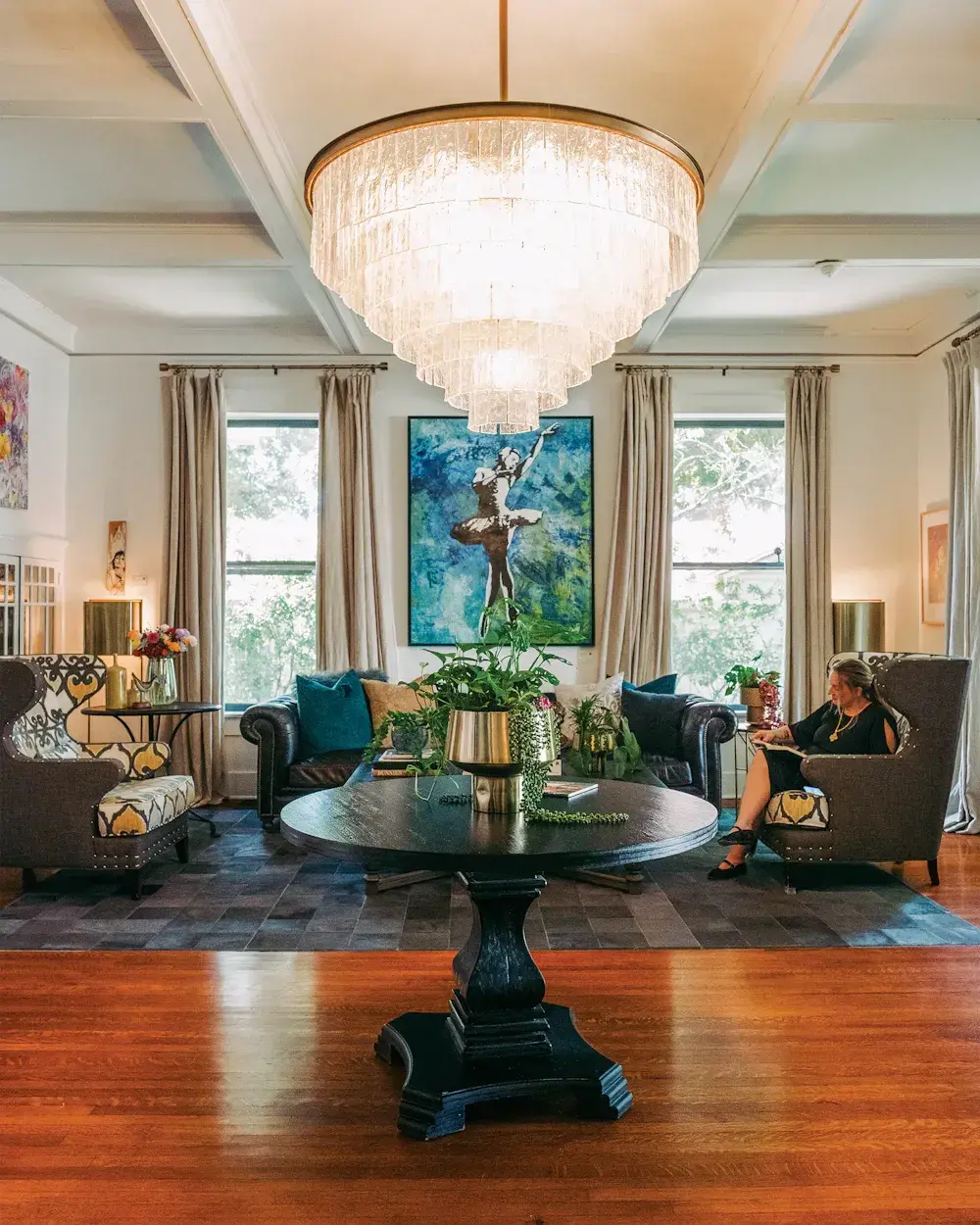
If you should find Sophie’s too serene, just a few blocks to the northeast, on a busier stretch of East San Antonio Street, is Prince Solms Inn, built in 1898 by Emilie Kuse Eggeling as the Comal Hotel. The inn’s six jewel-toned suites, on the second floor, are posh and comfortable, with the added benefit of on-site bars and restaurants to suit any mood. Listen to country crooners on the patio at Muck & Fuss Craft Beer & Burgers, next door, or descend the stairs to the subterranean Sidecar for jazz on the grand piano, gin martinis, and Maryland-style crab cakes. The Parlour Bar, in the inn’s first-floor lobby, offers classy tranquility. Considering the competing music and the structural idiosyncrasies of a geriatric building, you’ll want to make use of the foam earplugs and sound machine in your room.
Within walking distance of both hotels are two dinner options where the food is good and the vibes are better. One is the immensely popular McAdoo’s Seafood Co. & Oyster Bar, named for William Gibbs McAdoo, a treasury secretary under Woodrow Wilson who was tasked with streamlining the construction of post offices, which is what this handsome redbrick and limestone building used to be. Lush sago palms and Southern magnolias outside set the stage for a New Braunfels meets New Orleans menu of oysters, chicken-fried ribeye, and redfish Pontchartrain. (Wiggins Hospitality Group, which owns McAdoo’s, plans to continue revitalizing classic buildings with the opening of the Old City Hall Restaurant & Bar later this year.) A more traditional option is Krause’s Cafe, which Eugene Krause opened as Gene’s Place in 1938. There’s no more spirited incarnation of the city’s allegiance to its history than this cafe, biergarten, and massive Munich-style beer hall.
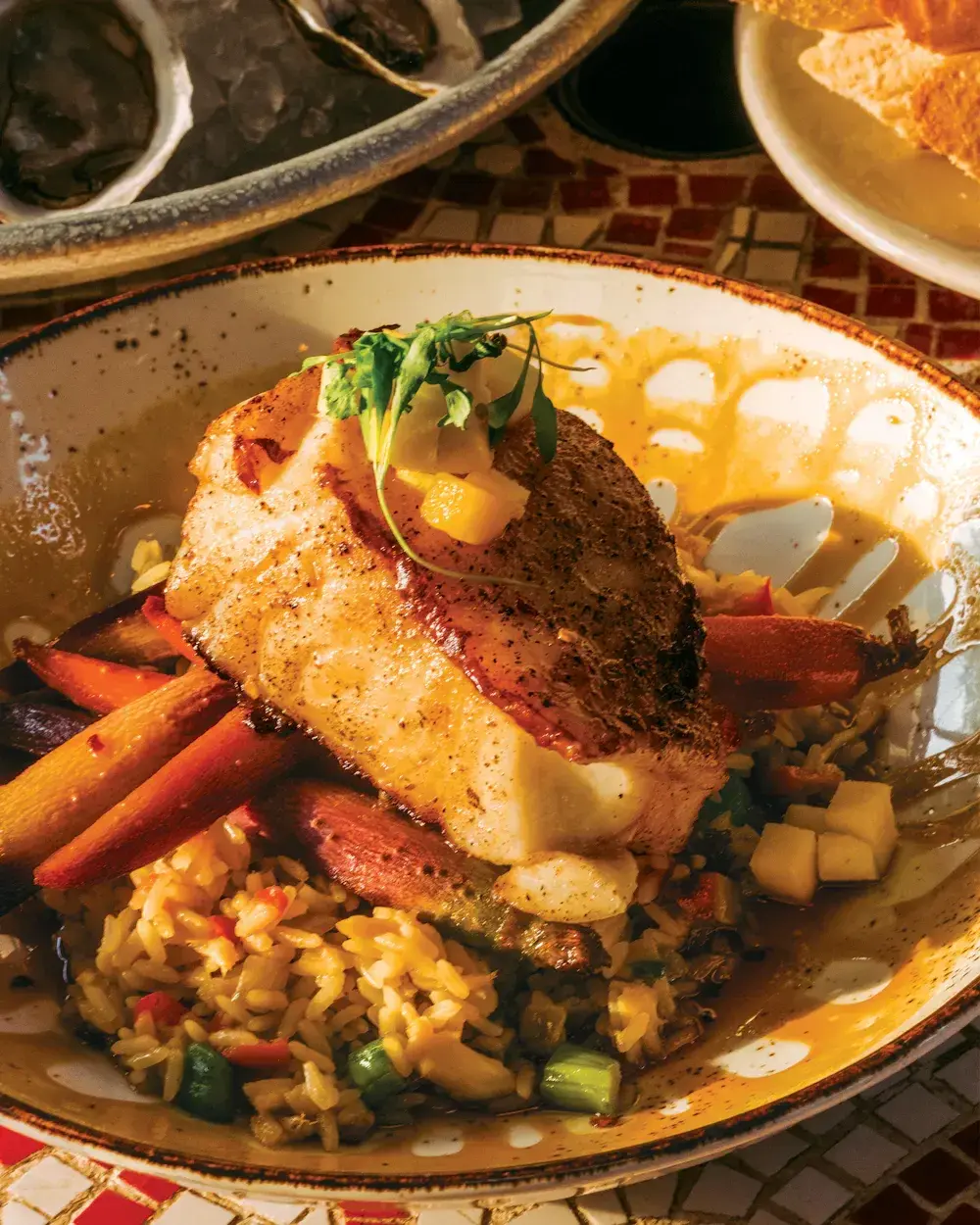
For a nightcap you want the Phoenix Saloon. The building has had a succession of owners and businesses since 1871, but “place to get a drink” has been its most consistent. (In the 1890s it was also home to the cafe where William Gebhardt created his Tampico Dust, the progenitor of the chili powder that would birth an empire.) If the tales are to be believed, the joint has a wild history that involves alligator pools and a German-speaking parrot admonishing patrons to pay their bill. The Phoenix was also reputedly the first bar in Texas to serve women (only outside, on a patio under trees rigged with bells to call for service). A surprising change of scenery lies at the bottom of an amber-lit staircase in the back: a separate tiki bar. At Uncharted, which opened at the end of 2024, the decor is legit and so are the mai tais, Painkillers, and Blue Hawaiians, ready to deliver a lesson I never seem to learn: Don’t end the night with rum.
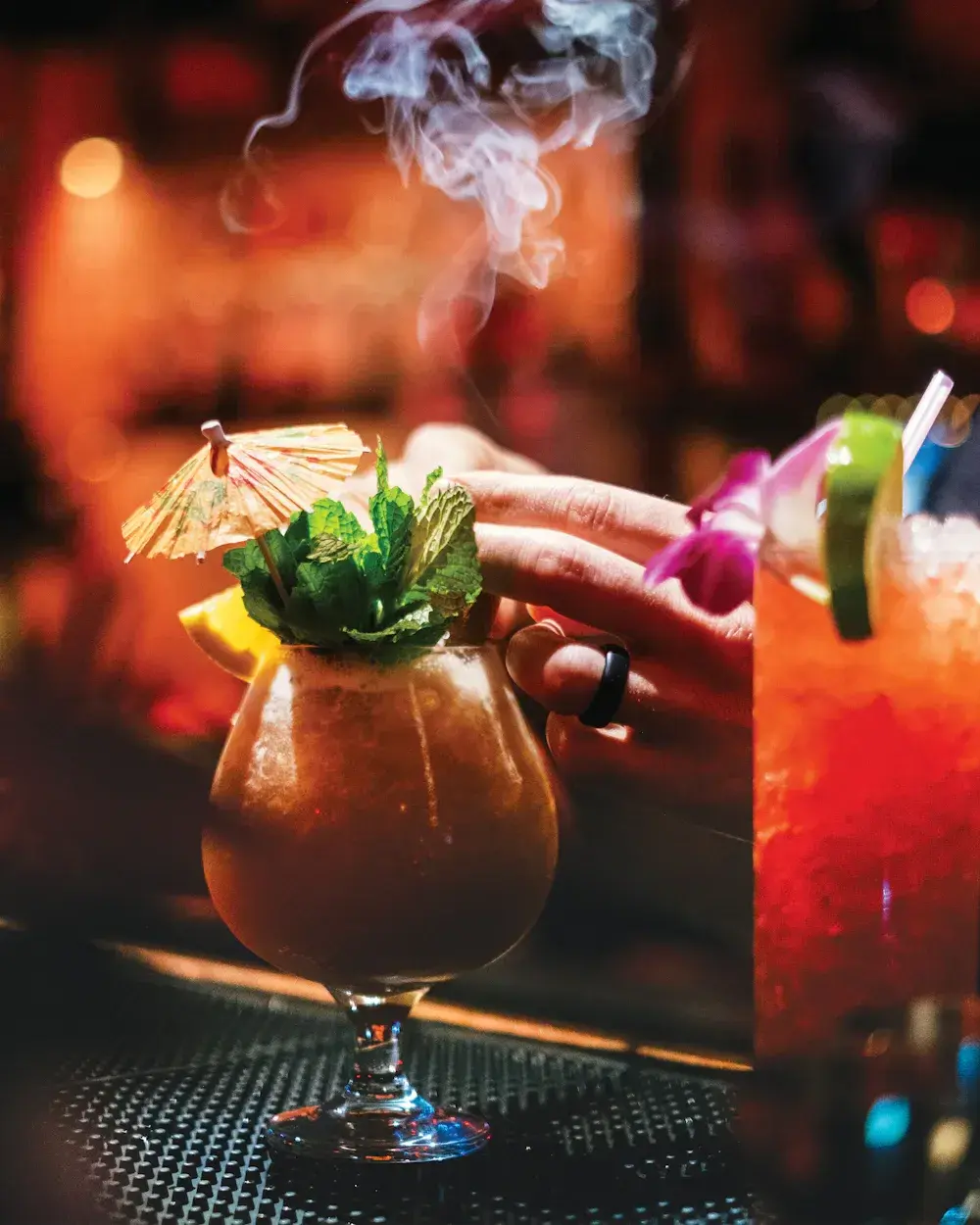
Saturday
At the New Braunfels Farmers Market, held every Saturday, vendors set up and sell items that, with some exceptions, have been cultivated, caught, grown, or produced within 150 miles. You’ll find seasonal produce, of course, along with baked goods, smoked meats, fresh seafood, tamales, and a booth named Old Coots Giving Advice (“It’s probably bad . . . but it’s free!”).

If you haven’t overloaded on samples, stop in at Cravings for quiche, sandwiches, and seasonal soups. It’s just down the street from your next stop, the Sophienburg Museum & Archives. Inside a modern limestone building, on a tree-shaded hill where Prince Carl of Solms-Braunfels would set up formal operations for the new settlement (and hoped to build a home for himself and his fiancée, Princess Sophia of Salm-Salm, who, alas, declined to leave Germany), a small collection of exhibits tells the story of the evolution of New Braunfels, starting with the shiploads of Germans who followed in his footsteps. Along with Prince Carl’s ornate carpet-seated camp chair, the museum displays items the newcomers would have carried inside their travel trunks and sample menus of what they would have eaten on their two-month voyage (lots of legumes). Later eras are represented by replicas of early businesses, such as a pharmacy “stocked” with Dr. Pierce’s Pleasant Purgative Pellets.
A couple streets to the east, every small room (and large front yard) of Max’s Haus is a trove of reasonably priced vintage finds such as 1960s-era Skifer snowboards and old Tonka toys. Downtown you’ll come across enormous antiques stores, as well as more easily digestible shops, many located in thoughtfully restored historic buildings. Lot 59 stands out for smartly curated vintage jewelry, wall art, and furniture in a happy cottage with gingerbread trim. Sister stores the Local and Heritage Supply sell contemporary men’s and women’s clothing and a Marfa-esque collection of fashionable books and barware. Next door to the appointment-only Lark Mason Associates (fans of Antiques Roadshow will know that name) is Brackish Goods, a river-themed boutique of upscale sundresses, swimsuits, and hats. The Chapter & Co., housed at the site of the town’s first bank, is a two-story coffee shop and bookstore warmed up with area rugs, cozy reading nooks near floor-to-tin-ceiling windows, and an inventory dominated by romantasy.
Wander through the small New Braunfels Railroad Museum next door, a depot for the International and Great Northern Railroad until 1982. The volunteer-run organization suggests a mere $5 donation to wander among vintage train parts, a display of hobo signals (“Ill tempered man lives here”), and model trains traveling through a miniature New Braunfels populated with tree-climbing goats, Wurstfest revelers, and even a few War of the Worlds Martian tripods. Finish outside with a tour of a cherry-red Missouri Pacific caboose outfitted with bunks, an oil-burning stove, and a cupola occupied by a mannequin brakeman. If you’re lucky, a Union Pacific will come barreling through town while you’re there, on tracks that are just a few feet from the museum.
Dinner should be at Favorite Neighbor, a wine-and-tapas bar that is a welcome departure from the burgers and CFS that, though delicious, occupy more than their fair share of New Braunfels menus. (If that’s what you want, though, may I recommend Freiheit Country Store, about five miles northeast of downtown, where red vinyl booths and scuffed wood floors will put you in the mood for paper-lined baskets of steak fingers delivered by young servers who are strikingly friendly, despite their “I Don’t Give a Schnitzel” T-shirts.) Favorite Neighbor’s concise menu tempts with sizzling gambas al ajillo, salmon-and-sweet-potato croquettes, and meatballs with beef sourced from nearby Granzin’s.
Sunday
Stop in at New Braunfels Coffee, just off the main plaza, a sunny spot for coffee, smoothies, and fresh pastries, or the nearby and beloved 2tarts Bakery, an explosion of color in and outside of the pastry cases, which brim with options both sweet and savory, like a jalapeño-bacon biscuit. A leisurely morning calls for brunch at Huisache Grill, named for the yellow-flowering Central Texas tree. The 31-year-old institution, nestled up to the railroad tracks, offers a menu of simple, modern American food, such as its famous tortilla soup, hot and crunchy trout, and pecan-dusted pork tenderloin, along with wines and local craft beers. (Ask for a table in the timber-frame room with the fireplace.)
Check out the Faust Street Bridge, a stately wood-and-wrought-iron truss bridge constructed in 1887 (one of the last to be built in Texas) to facilitate the crossing of the Guadalupe River by supply caravans and travelers of all kinds. Morning is a fine time to join cyclists and walkers on the more than 640-foot span over a placid stretch of river, where egrets fish from limestone ledges and people do the same from motorized kayaks. In the background on the northern side are a dam, railroad bridge, and abandoned textile mill that viewers of Fear the Walking Dead might recognize.
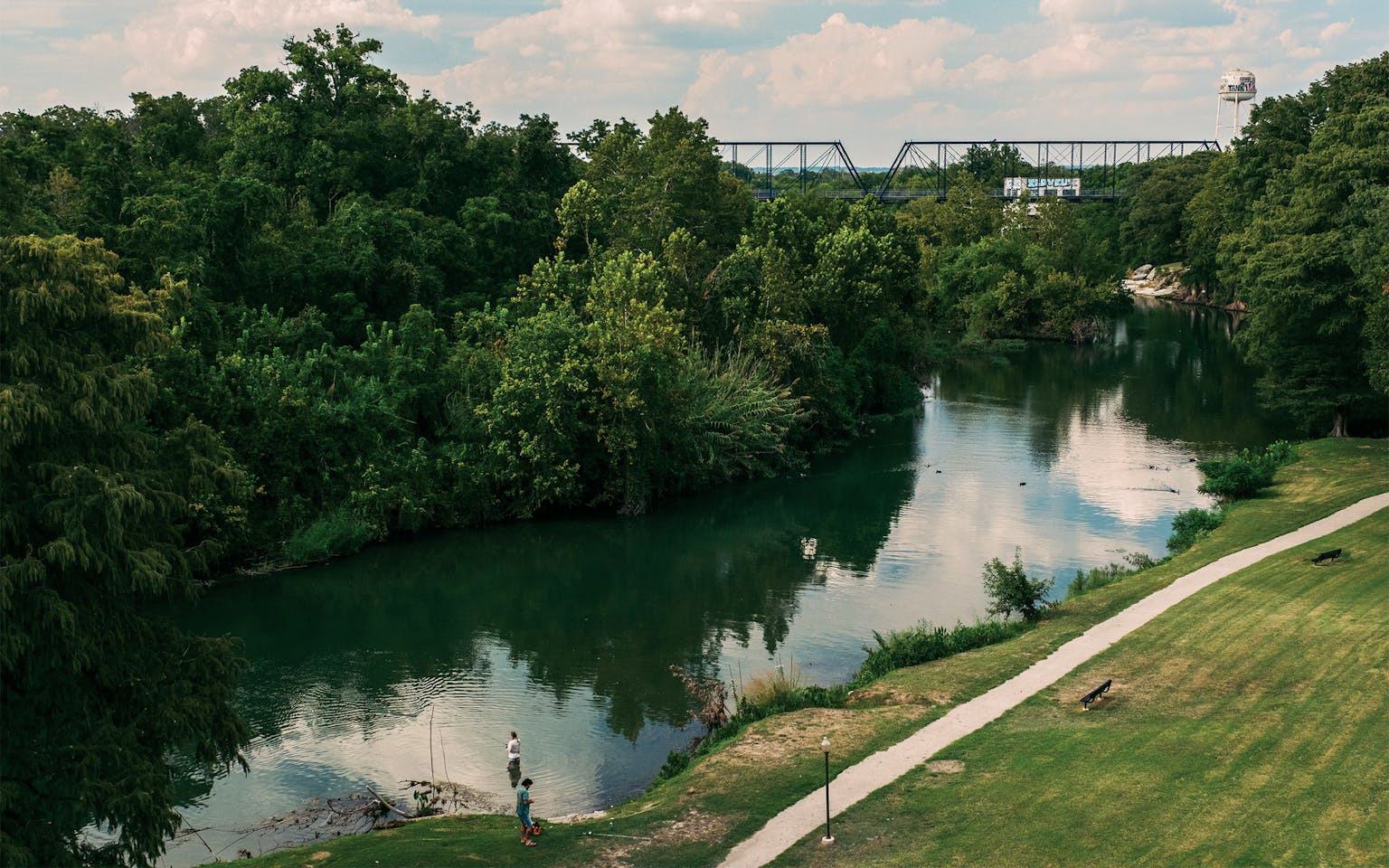
If time allows, spend an afternoon at Landa Park, a 51-acre patch of tree-studded land originally owned by German industrialist Joseph Landa, who settled here with his wife, Helena, in 1851. It’s a jewel of a park, home to an eighteen-hole golf course, miniature train, dance slab, paddleboats, and, in November, Wurstfest. There’s also Panther Canyon Nature Trail, 1.8 miles of rocky ground that begin at the headwaters of Comal Springs, and plenty of green space furnished with what seems to be enough picnic tables for the whole town. Take advantage of one by stocking up before your visit at Otto’s Cheese Shop, just a little north of the park. It’s a strip-center treasure selling cured meats, olives, tinned fish, crackers, wine, and, of course, cheese. Of the latter, choose your own or surrender to the experts, which is how I discovered a creamy Swiss Schnebelhorn and a where-have-you-been-all-my-life butterkäse (German for “butter cheese”).
Afterward stroll the 1.25-mile loop through the park’s arboretum, a “library” of fifty-odd tree species that includes anacua, weeping willow, Texas red oak, and Canary Island date palm. The trail passes alongside Landa Park Lake, where you may see ducks motoring toward you across the glassy water or a solitary heron posted up on a rock, patiently waiting for its mobile meal. The entire park is a sanctuary of flora and fauna sustained by the clear spring water that brought everyone here in the first place.
A Site Out of This Underworld
Natural Bridge Caverns is one for the ages.
About fifteen miles west of New Braunfels, Natural Bridge Caverns is a family-owned network of caves on a 759-acre stretch of land that’s a limestone-and-oak-tree embodiment of the Hill Country. It’s easy to get past the inevitable theme park vibe upon arrival when you realize that what is essentially on offer here is an almost inconceivable opportunity to witness eons of Texas geological history, past (fossilized sea creatures from the Cretaceous period) and present (drops of slightly acidic water passing through layers of porous rock and onto your head). Both of the cavern tours are magnificent, but if there’s time for only one, I’d suggest the Discovery Tour, which focuses on what was once called the North Cavern, discovered in 1960. A narrow, twisty, low-clearance passageway winds its way down about 180 feet, past aquamarine pools and delightfully strange formations that look like drippy sandcastles, ornate chandeliers, sea urchins, and fried eggs. There’s even a mountain of guano from long-gone bats (a sample was carbon-dated at 15,000 years old).
